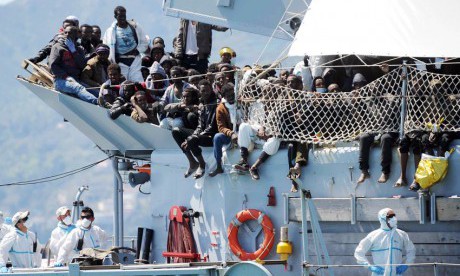The images and words are so very similar.
Back then, the German chancellor said she was “deeply upset” — today she is “appalled.” Back then, the president of the European Commission said he would never forget the dead, and that something had to change — today he claims: “The status quo is not an option.”
Back then, Europe’s interior ministers spoke of a horrific event — today it’s an “utter horror.'” The gap between then and now is 19 months. And several thousands of dead in the Mediterranean.
Then was the night of Oct. 3, 2013. A fire broke out on an old cutter that had set out from the Libyan city of Misrata. Near the small Italian island of Lampedusa, more than 500 people went overboard, most of them from Somalia or Eritrea.
Not even one-third survived. The coffins in Lampedusa’s airport hangar became a symbol for Europe’s “shame,” as Pope Francis put it.
At a meeting in Luxembourg held after the disaster, EU interior ministers spoke of a “wake-up call” and immediately established a working group. European Home Affairs Commissioner Cecilia Malmström argued that Lampedusa was an “image of the Union that we do not want.”
In Berlin, the German government declared that “given a human catastrophe of this size,” it was self-evident that current refugee policies should reexamined.
Shortly thereafter, German Chancellor Angela Merkel traveled to a summit of EU heads of government in Brussels, where “decisive measures” were promised to avoid a repeat of the catastrophe.
And then? Then the catastrophe repeated itself. A dozen times. Between then and now.
In the space of a few days in April, 400 people traveling from Africa to Europe drowned in the Mediterranean, then a boat with over 800 refugees capsized — and only 28 survived. Continue reading
Source and Image:
Additional readingNews category: Features.




